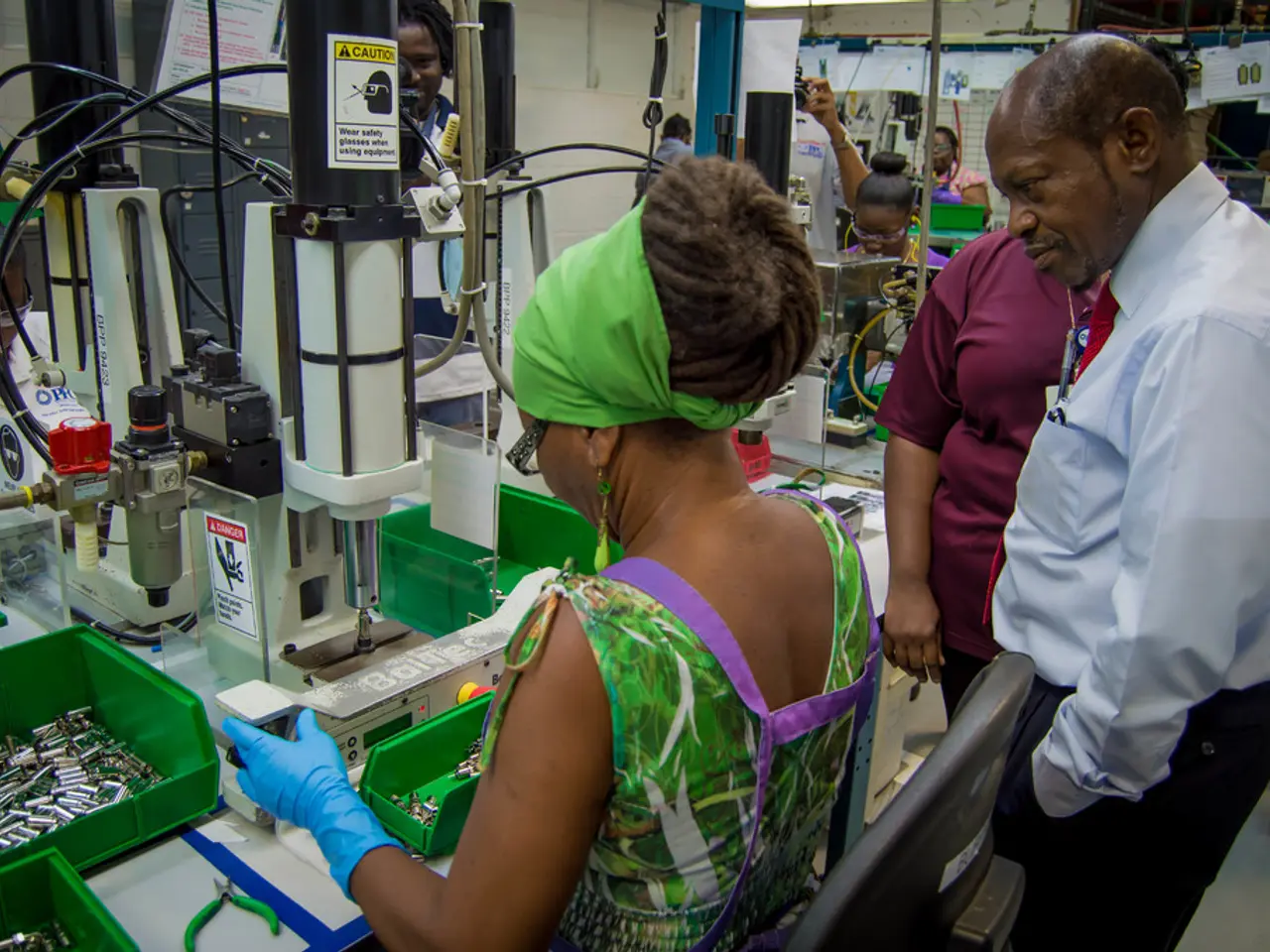Digital technologies revolutionizing the management of healthcare workforce shortages
In the face of an impending workforce shortage, healthcare facilities are turning to digital solutions to address the challenge and improve operational efficiency. These innovative technologies, including AI-powered virtual agents, electronic health records (EHRs), virtual care platforms, and workforce intelligence tools, are transforming the way healthcare is delivered.
One significant advancement is the use of AI agents for workflow automation. Partnerships such as KPMG and Hippocratic AI are deploying generative AI agents to handle tasks like patient intake and care management follow-ups. By automating administrative tasks, these agents free up healthcare professionals to focus on direct patient care, mitigating the impact of staff shortages.
Investments in EHR systems and virtual care technologies also play a crucial role. They improve data accuracy and enable remote patient monitoring, lowering operational burdens and improving care access. This is particularly beneficial for patients in remote or underprivileged areas, as well as those seeking specialist care far from the facility.
Workforce intelligence and talent analytics tools, such as JobsPikr, provide real-time data on healthcare job trends and workforce needs. This allows managers to make informed hiring decisions and adjust staffing models based on live market conditions, ensuring that healthcare facilities are staffed appropriately.
Digital training programs are also enhancing workforce readiness by closing skill gaps and improving digital tool utilization among healthcare staff. This addresses factors contributing to turnover and staff exhaustion.
Role consolidation through software automation is another key area of development. Administrative and billing roles are becoming more consolidated and supported by software, reducing the number of personnel needed and enabling remaining staff to handle more layered responsibilities efficiently.
Digital solutions are also making strides in mental health care. Digital mental health platforms and teletherapy are used for offering consulting services to patients via online platforms, providing a convenient and accessible option for those seeking help.
Blockchain technology is another transformative solution for the healthcare sector. It is used for maintaining decentralized data storage systems for patient health records, ensuring secure and unalterable data storage. This not only improves efficiency but also helps reduce the demand for healthcare staff by making data management more convenient and secure.
In addition, blockchain technology aids supply chain management in healthcare, reducing the chances of counterfeit drugs entering the system. It also helps minimize medical professional burnout and is a practical solution for the healthcare workforce crisis, enhancing work efficacy.
These digital innovations provide scalable solutions to the U.S. healthcare system’s projected shortage of up to 3.2 million workers by 2026, helping to maintain care quality while managing rising costs and demand pressures.
One example of a digital tool for workforce efficiency in healthcare facilities is NurseSmart. These tools are essential in the ongoing effort to streamline operations, reduce workforce pressure, and improve overall efficiency in the healthcare sector.
Science and health-and-wellness are intertwined in the development of digital solutions for the healthcare sector. For instance, AI agents are deployed to automate administrative tasks, freeing up healthcare professionals to focus on direct patient care (health-and-wellness), while also improving operational efficiency through workflow automation (science).
Furthermore, blockchain technology is revolutionizing patient health records, ensuring secure and unalterable data storage (technology), enhancing not only efficiency but also reducing the demand for healthcare staff (health-and-wellness).




